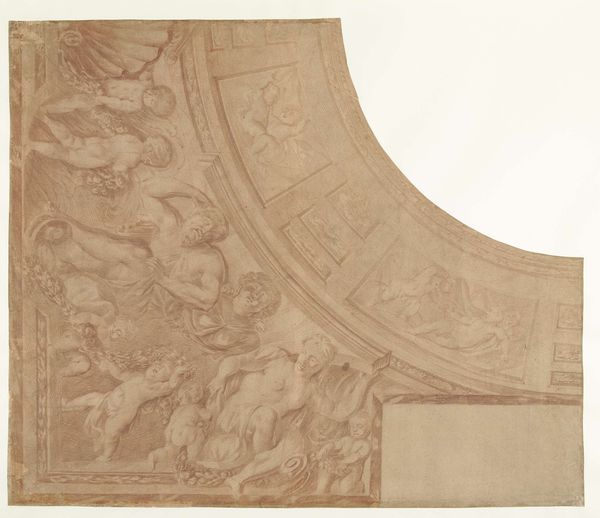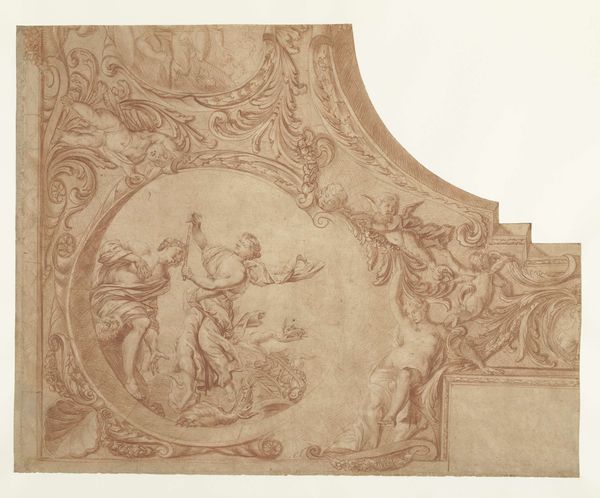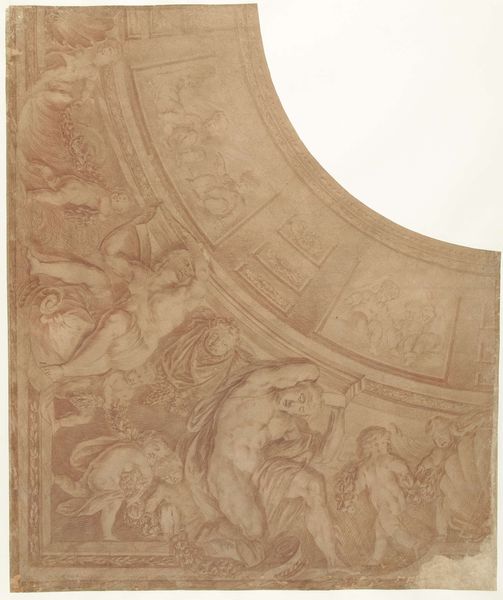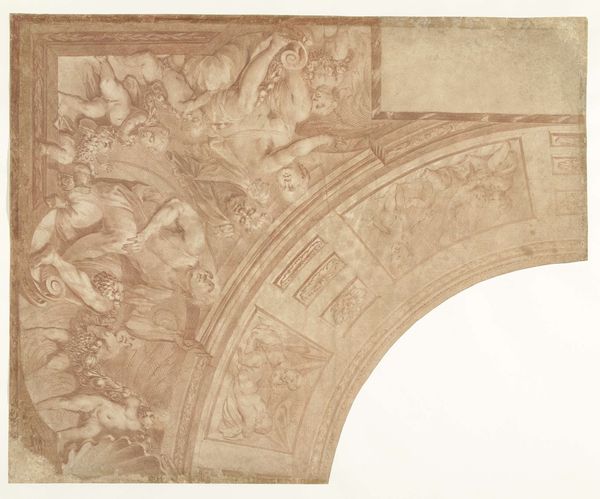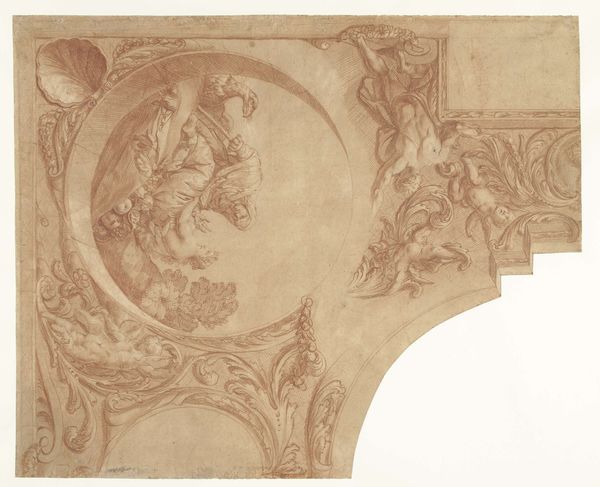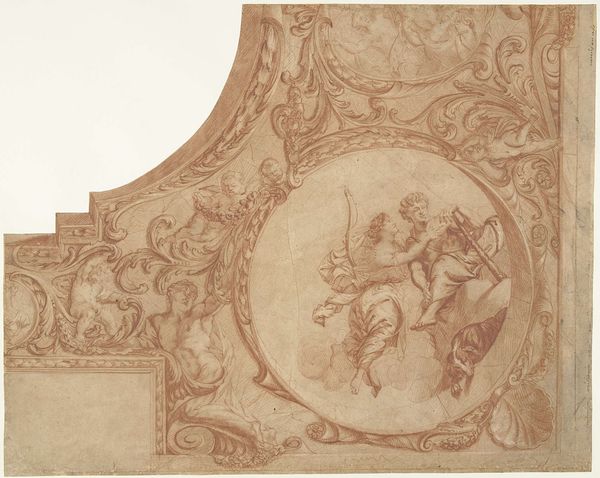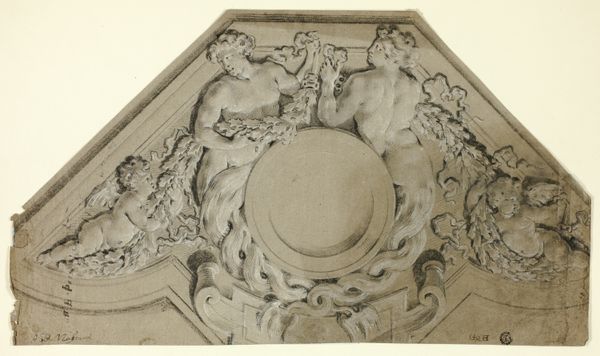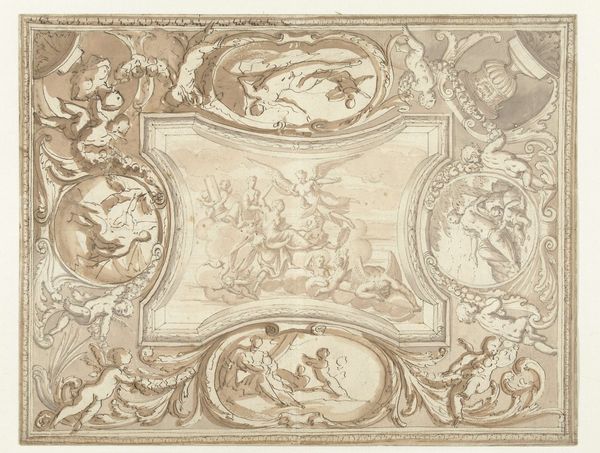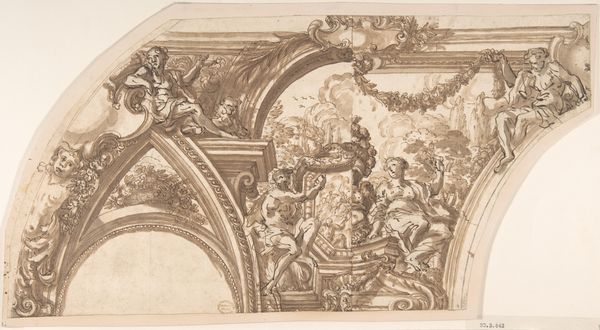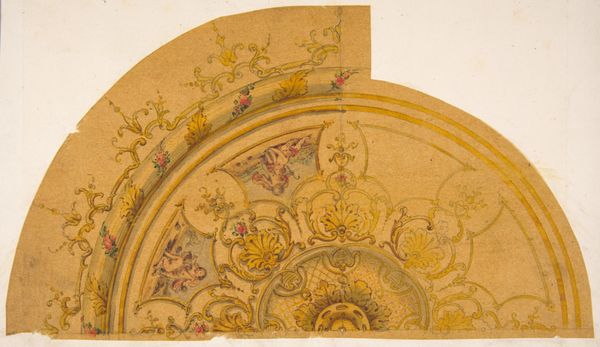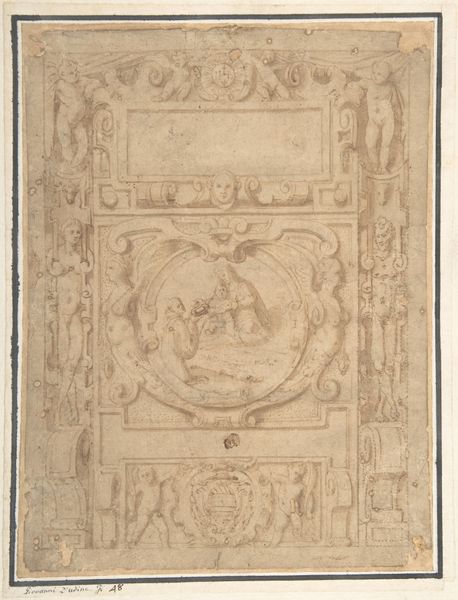
Ontwerp voor een hoekstuk van een plafond met zittende figuren, putti en buste van een sater 1680 - 1757
0:00
0:00
drawing, charcoal
#
drawing
#
toned paper
#
allegory
#
baroque
#
charcoal drawing
#
figuration
#
charcoal
#
history-painting
Dimensions: height 626 mm, width 509 mm
Copyright: Rijks Museum: Open Domain
Editor: This is "Ontwerp voor een hoekstuk van een plafond met zittende figuren, putti en buste van een sater," a design for a ceiling corner piece by Mattheus Terwesten, dating from 1680 to 1757. It's a charcoal drawing on toned paper, currently held in the Rijksmuseum. It feels very ornate, almost excessively so. How do you interpret this work, particularly in its historical context? Curator: The opulence certainly reflects the Baroque era's embrace of grandeur. But beyond the aesthetic, let's consider the power dynamics embedded here. Ceilings, particularly in aristocratic homes, weren't just decoration; they projected status. Who is depicted and what stories are being told? Think about how allegory and figuration are employed to reinforce certain values and ideologies. Who were these images designed to impress, and whose voices are excluded? Editor: I see your point. The putti and allegorical figures likely served to glorify the patron. But how does understanding that power dynamic change how we view the artistry itself? Curator: It compels us to question the narratives being presented as universal truths. By understanding the social context, we can analyze how art contributed to shaping societal norms and reinforcing hierarchies. The choice of subject matter, the artistic style – they all served a purpose. Does recognizing that lessen the artistic achievement? Not necessarily, but it asks us to engage with it critically, examining the ethics of aesthetic pleasure when that pleasure was often born of privilege and inequality. What impact do you think this has on contemporary art? Editor: It makes me think about how today's artists use similar strategies of scale and symbolism, but often to subvert rather than reinforce dominant power structures. This has definitely broadened my perspective! Curator: Indeed. Recognizing the historical and social forces at play allows us to decode the messages embedded within the art and how they resonate, or clash, with contemporary values. It encourages us to use art as a lens through which we can see history and create the conditions to dismantle oppressive power structures.
Comments
No comments
Be the first to comment and join the conversation on the ultimate creative platform.
